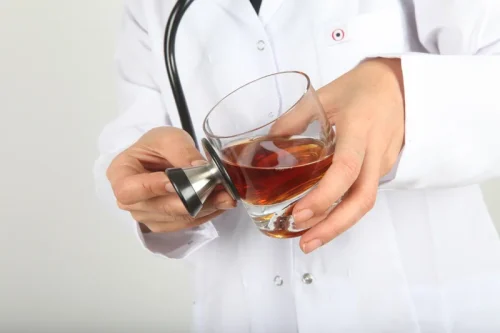
For others, their alcohol problems are overcome with the help of a mutual aid organisation, such as Alcoholics Anonymous (AA; see Section 2.10). Nevertheless, many will require access to specialist treatment by virtue of having more severe or chronic alcohol problems, or a higher level of complications of their drinking (for example, social isolation, psychiatric comorbidity and severe alcohol withdrawal). End-Stage – This final stage, known as the late stage, is described as total alcohol dependence, where you may experience uncontrollable alcohol consumption. Health conditions, like cardiovascular and liver diseases, may be caused or exasperated by your alcohol use, and death from alcohol poisoning or long-term effects of alcohol use is imminent if treatment is not sought. Aside from intense cravings and consuming thoughts of alcohol, when not drinking, you may experience severe withdrawal symptoms, including visual or hearing disturbances or hallucinations, delirium, and possibly seizures. Nevertheless, numerous pharmacotherapies have been employed to treat alcoholism, guided principally by advancing knowledge about alcohol’s interactions with various components of the brain’s reward and stress pathways (Heilig and Egli 2006; Litten et al. 2005; Spanagel and Kiefer 2008).
Alcohol withdrawal

The following paragraphs briefly summarize some of the main effects of alcohol on these neurotransmitter systems. A more detailed overview of how alcohol impacts neurotransmission can be found elsewhere [96,97,98,99]. With regard to sex, although women with AUD enter treatment earlier in the course of the disease than men,133 clinical studies of pharmacologic AUD treatment tend to be comprised of mostly male patient populations.
What is considered 1 drink?

If your pattern of drinking results in repeated significant distress and problems functioning in your daily life, you likely have alcohol use disorder. However, even a mild disorder can escalate and lead to serious problems, so early treatment is important. This conflation of addiction with dependence, which stigmatizes effective medication treatment for opioid use disorder, is even enshrined in law. The federal language around child abuse reporting for “substance affected” or “substance exposed” newborns has been interpreted by many states to mean that babies born to people treated with methadone or buprenorphine must be reported to child welfare authorities due to concern about abuse or neglect.

How doctors diagnose alcohol dependence
This can lead to traumatic family surveillance and even separation, not surprisingly disproportionately impacting Black, Latinx, and Native American families because of racist implementation in these reporting practices. My belief came from the observation of people drinking smoothies for weight loss and the experience of losing water weight after a heavy drinking session. As maintaining an ideal body weight was relevant to me, I captured the information and formed an assumption that liquids equal weight loss. The assumption led to the conclusion that drinking alcohol wouldn’t make me gain weight.
6A third FDA-approved medication to treat alcohol dependence (disulfiram; Antabuse®) targets alcohol metabolism. Alcohol use disorder can include periods of being drunk (alcohol intoxication) and symptoms of withdrawal. Approximately two thirds of male prisoners and over one third of female prisoners are hazardous or harmful drinkers, and up to 70% of probation clients are hazardous or harmful drinkers (Singleton et al., 1998).
What Increases the Risk for Alcohol Use Disorder?
The action of alcohol on GABA is similar to the effects of other sedatives such as benzodiazepines and is responsible for alcohol’s sedating and anxiolytic properties (Krystal et al., 2006). Glutamate is a major neurotransmitter responsible for brain stimulation, and alcohol affects glutamate through its inhibitory action on N-methyl D-aspartate (NMDA)-type glutamate receptors, producing amnesia (for example, blackouts) and sedation (Krystal et al., 1999). In general, offspring of parents with alcohol dependence https://ecosoberhouse.com/article/5-stages-of-alcoholism/ are four times more likely to develop alcohol dependence. Evidence from genetic studies, particularly those in twins, has clearly demonstrated a genetic component to the risk of alcohol dependence. A meta-analysis of 9,897 twin pairs from Australian and US studies found the heritability of alcohol dependence to be in excess of 50% (Goldman et al., 2005). However, a meta-analysis of 50 family, twin and adoption studies showed the heritability of alcohol misuse to be at most 30 to 36% (Walters, 2002).
- Alcohol stimulates endogenous opioids, which are thought to be related to the pleasurable, reinforcing effects of alcohol.
- To date, no therapeutic interventions can fully prevent relapse, sustain abstinence, or temper the amount of drinking when a “slip” occurs.
- This latter finding suggests that elevated alcohol self-administration does not merely result from long-term alcohol exposure per se, but rather that repeated withdrawal experiences underlie enhanced motivation for alcohol seeking/consumption.
- Alcohol dependence refers to being unable to stop drinking without experiencing symptoms of withdrawal.
- In some cases, these effects can be transient and are not evident after a period of abstinence from alcohol [136,137].
12.1. Children and young people
Doctors assess whether someone is dependent on alcohol by looking for signs that show their patient can’t regulate their drinking, and that they have a strong internal drive to use alcohol. If you find that you ‘need’ to share a bottle of wine with your partner physiological dependence on alcohol most nights of the week, or always go for a few pints after work just to unwind, you’re likely to be drinking at a level that could affect your long-term health. Even if you don’t recognise the symptoms above, there are varying degrees of alcohol dependence.
- In this review, we discuss the current literature on the neurobiology of AUD, with a focus on the biological changes that occur in the brain resulting in addiction.
- During the development of addiction, individuals move from impulsive to compulsive drug taking, which is accompanied by a shift from positive to negative reinforcement [28].
- This process appears to depend on the involvement of genes such as Per2, which typically is involved in maintaining the normal daily rhythm (i.e., the circadian clock) of an organism (Spanagel et al. 2005).
Recognizing the differences between dependence and addiction is crucial for tailoring effective treatment and recovery strategies. In this article, we look at the differences between addiction and dependence and explore definitions, examples, and differences in treatment. A person with an addiction has difficulty not using substances or doing rewarding activities, even if it is harming them. Taking regular breaks from alcohol is the best way to lower your risk of becoming dependent on it.
Leave a Reply